
5 minute read
Products to Projects

Predator Free 2050 Limited initiated Products to Projects with $6.5 m backing from the Provincial Growth Fund.
Advertisement
The programme aimed to remove barriers to the production of new predator control tools and fast track availability for project use within three years. Groups involved in 62 research and development projects expressed interest in support.
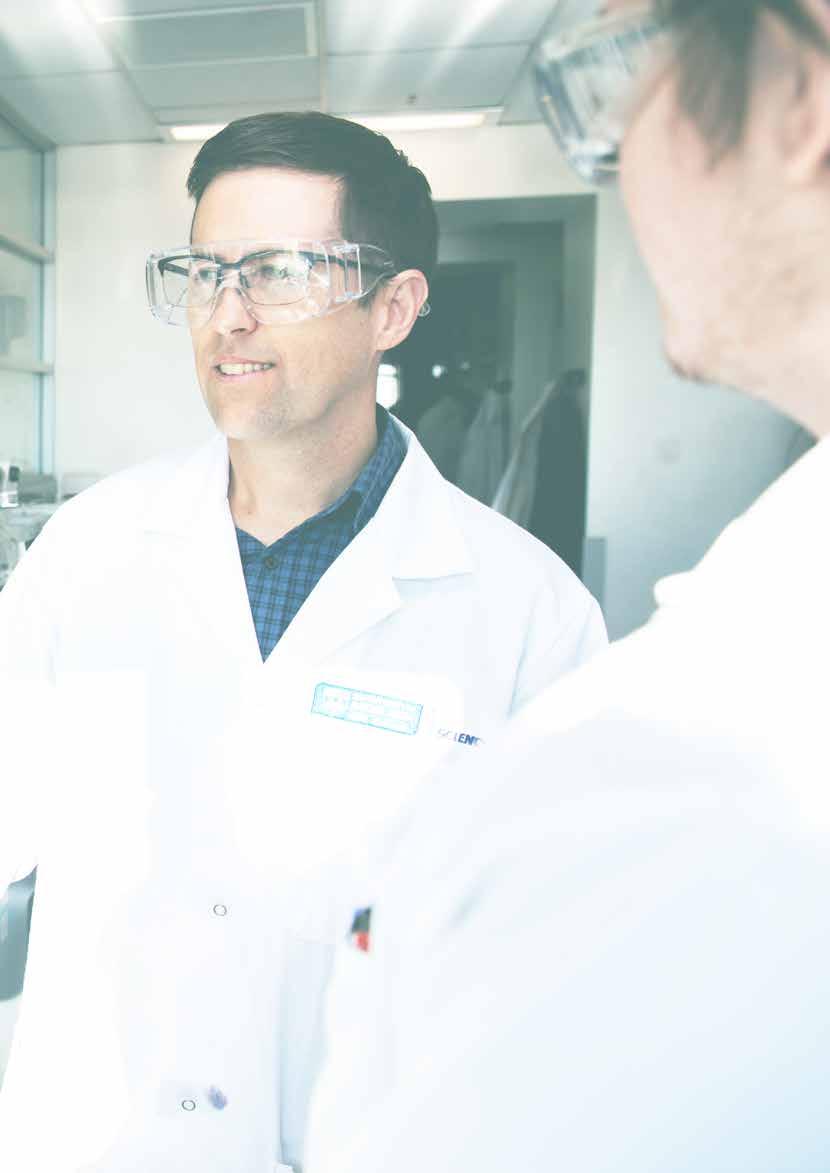
Twelve projects were selected for funding, with nine launched by June 2020. Some of these products are already making a difference in large landscape predator eradication projects.
Photo by Folko Boermans
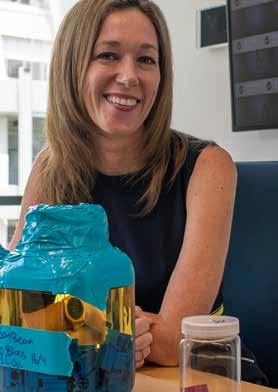
Long Life Lures
Photo by Folko Boermans
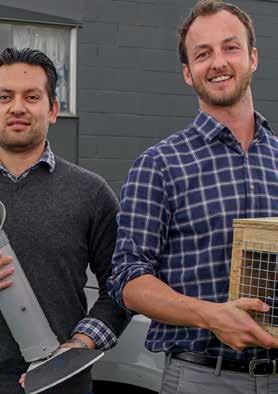
Spitfire Control Devices
Long-life lures for rodents, possums Spitfire self-resetting toxin delivery and mustelids developed by devices are being re-engineered by biosecurity experts at Boffa Miskell an environmental technology startaim to provide a cost-effective up, Environment & Conservation alternative to food-based baits that Technologies Ltd in Tauranga. deteriorate quickly in the field. The lures are created using a solid- a year and two different designs allow state, biodegradable plastic polymer for control of possums or stoats. block which goes through a treatment When a target animal interacts with process to make it highly attractive the device, sensors detect its unique and long lasting. Different treatments characteristics, triggering a spray of will be developed and tested to create liquid toxin onto its abdomen, which lures as attractive as fresh bait which is later ingested during grooming. will last for months at a time, vastly Approved, humane, species-targeted reducing labour costs associated with lures and toxins are used with the replenishing baits. devices.
Blocks will be manufactured and distributed from Rotorua and other regional centres. Spitfires can be left unattended for Spitfires are expected to be used long-term to help stop re-invasions following initial knock-down operations and in remote areas requiring ground control tools.
Photo by Folko Boermans
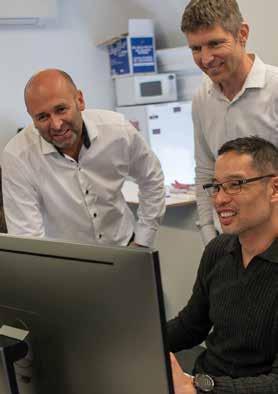
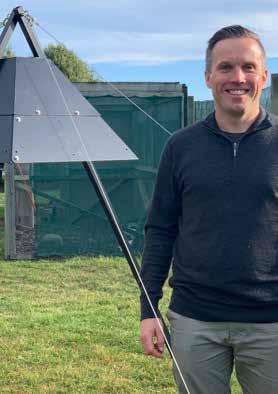
Photo by Robyn Janes
The Hammerforce Self- Back country camera
Resetting Trap
Zero Invasive Predators (ZIP) is The Hammerforce trap, being developing a highly sensitive back developed by Hammerforce Limited, country detection camera to detect is intended as an airpowered, and identify possums, rats and stoats self-resetting, multi-species trap. to help protect remote predator-free It will utilise the same patented landscapes. Hammerforce Technology® valve The device is based on a thermal actuation system used in the new-to- camera, coupled with on-board market Airbow Framer nail gun and Artificial Intelligence software and concrete gun. remote reporting functionality, to The trap will be designed for quick, identify predators and provide realhumane kills. Its compressed air time notification of detections. system means there are no disposable This camera is expected to canisters and it can be recharged significantly reduce the costs in the field. The trigger technology associated with camera-based will be trialled in different entrance detection; from $60/ha/year architectures to avoid trap shyness. to $10/ha/year. Assembly and distribution are planned Co-funding from the NEXT for Whangārei. Foundation, Department of Conservation and Biological Heritage National Science Challenge, will enable completion of prototyping, field-testing and supply.
Photo by ZIP
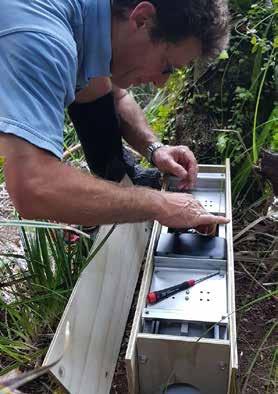
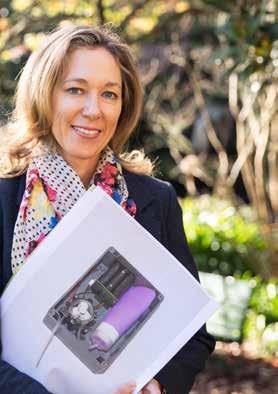
Photo by Billy Wong
The Remove and Protect Approach
The Remove and Protect approach, being developed by Zero Invasive Predators (ZIP), aims to enable the complete removal of possums, rats and stoats from mainland New Zealand landscapes. The system includes an automated lure dispenser, the ZIPInn rat and stoat trap, electronic transmitter, LoRa-Iridium satellite box and webserver for handling data from remote trapping networks.
These tools are in use by regional projects supported by Predator Free 2050 Limited, and now available for supply from ZIP.
AutoDispense Lure
Boffa Miskell Limited is developing, field testing and validating a low cost, open-source, automated system for dispensing lures to rodents, mustelids and possums. The AutoDispense Lure dispenses an egg-mayo mix at pre-determined times and is designed to last for up to a year, significantly reducing the labour costs involved in rebaiting. The device will fit with both existing and new technologies. The device is co-funded by DOC’s Tools to Market programme.
Photo by Robyn Janes
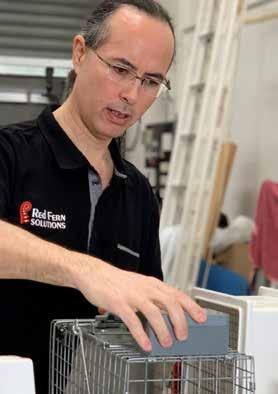
Flexi-comms
Red Fern Solutions of Christchurch is developing a remote data reporting and management system to process inputs from traps and monitoring devices, and transmit data to the cloud using Bluetooth, Wifi, cellular, and satellite communications. This ‘Flexi-comms’ system aims to enable transmission of images from remote cameras.
Photo by Folko Boermans
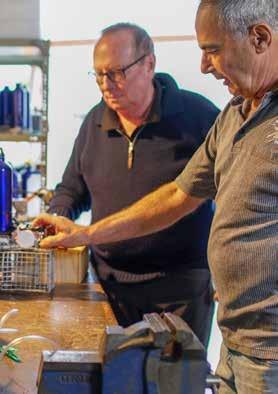
The AT220 Auto Rebait Reset Trap
The AT220 Auto Rebait Reset Trap was invented by NZ Autotraps, a two-person team in Hamilton. The trap uses a mechanical drive, rechargeable battery and auto-lure dispenser to reset a possum and rat trap 100 times so that it can be left in the field for six months. The funding has enabled design improvements, the purchase of manufacturing equipment and a move to new premises in Whakatāne, with capacity for six assembly staff to meet demand.
Photo by Billy Wong

Norbormide formulation
The rat-selective toxicant Norbormide is being redeveloped by Aucklandbased company Invasive Pest Control, University of Auckland and Boffa Miskell.
Norbormide is selectively toxic to rats and its lack of toxicity to birds and other mammals is unique, but taste aversion has previously limited its efficacy for rat control. New chemical synthesis to limit impurities and improve bait palatability has shown promising results with Norway and ship rats. The funding enables researchers to fast-track research and development, registration, production and supply.
Next up
Predator Free 2050 Limited is putting in place funding agreements to enable three further Products to Projects initiatives: the development of image recognition software to process and transmit trail camera footage from the field, optimisation of self-resetting trap design aimed at rats, and integration of AI image recognition into trapping.







